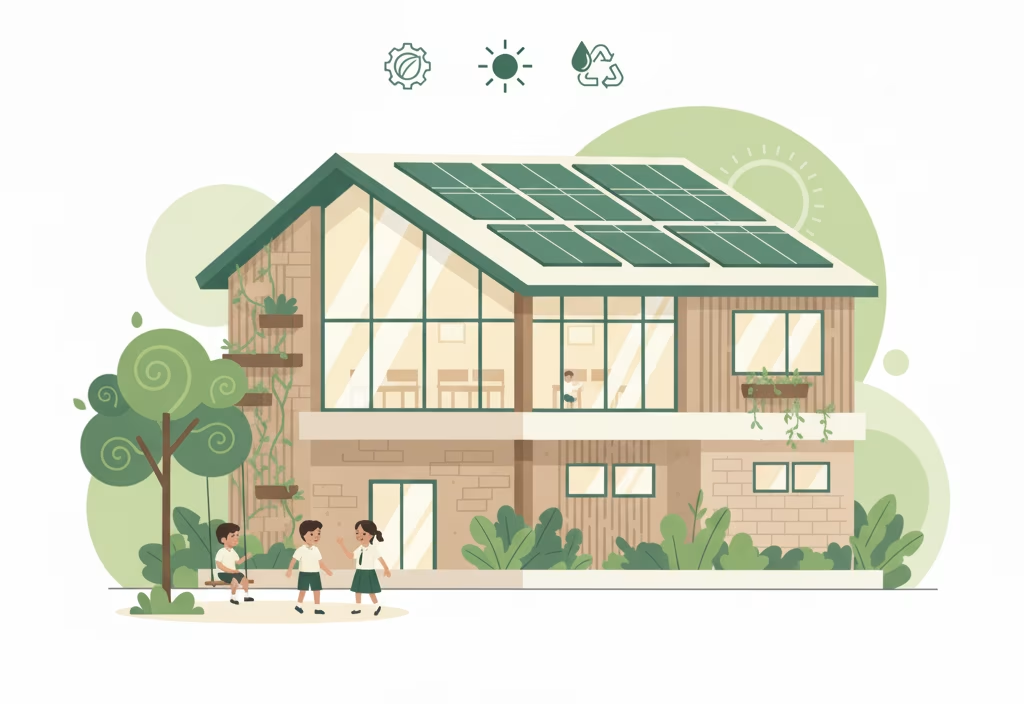Turnkey vs. Traditional Contracts: Choose Best Model for Schools, Hospitals, Colleges Infrastructure in India (2025)

Table of content
Building a school, hospital, college, or community centre is more than a construction project, it’s a long-term social investment. Yet, one of the biggest reasons why NGO-led and institutional infrastructure projects in India face delays, budget overruns, or quality issues is choosing the wrong contracting model at the start.
As India focuses on strengthening education, healthcare, skilling, and social infrastructure in Tier 2–6 regions, promoters, trusts, and non-profit organisations often face a key decision:
Should they choose a Turnkey Contract or a Traditional Contracting model?
This choice determines not just cost, but also:
- Timeline of completion
- The quality & compliance of the building
- Risk exposure
- Accountability and ease of project execution
Before you choose, it’s important to understand how each model works especially for purpose-led projects such as schools, hospitals, and community infrastructure.
If you don't want to mistake, Read: Hospital Construction Requirements in India 2025

In a Turnkey construction model, a single contractor is responsible for the entire project from concept and design to construction, compliance, and final handover. The client receives a ready-to-use facility, much like “turning a key” and starting operations.
How Turnkey Construction Works
A typical turnkey project flow looks like this:
- Project Briefing & Requirement Analysis
- Site Study & Initial Concept Design
- Detailed Architecture + MEP + Structural Design
- Approvals & Regulatory Compliance Planning
- Construction & Quality Control
- Interiors, Furnishings & Fit-Outs
- Final Handover – Ready for Use
Turnkey contractors may also include:
- Cost estimation and budget planning
- Vendor management + materials procurement
- Green building & sustainability integrations
- Post-handover maintenance support (optional)
See, How to choose right consulting for your construction project
Traditional contracting, often referred to as the Design–Bid–Build model, separates the project into different stages and different vendors. The client manages multiple agencies at various levels.
How Traditional Contracting Works
- Client hires an architect to create designs & drawings
- Multiple contractors bid for execution based on drawings
- Client selects separate civil, electrical, plumbing, and interior contractors
- Client (or a PMC) coordinates between all parties
- Construction happens in stages, often with frequent variations
In this model, the client retains a high level of control over design, material choices, and vendor selection.
Read about Rubble Masonry to include in your next construction project

Concrete Mix Design as per IS 10262
Rule of thumb: NGOs should optimise lifecycle cost (CapEx + Opex) rather than only chasing lowest bid.
- Where Turnkey saves money
- Hidden Overruns Avoided: Design–procurement–execution alignment prevents 10–18% leakage from scope gaps, site rework, coordination delays, and material substitution.
- Bulk Procurement: Aggregated supplier deals for cement, steel, MEP components, and medical/edutech fit-outs.
- Parallelism: Overlapping design and early works compress time—time saved = cost saved (site overheads, rent, financing, etc.).
- Standardisation: Repeatable blocks (classrooms, wards, hostels) reduce per-unit cost.
- Hidden Overruns Avoided: Design–procurement–execution alignment prevents 10–18% leakage from scope gaps, site rework, coordination delays, and material substitution.
- When Traditional can be cheaper
- Highly evolved client brief & in-house team to police quality and variations.
- Iconic/one-off architecture where design experimentation is key.
- Long, phased campus with changing budgets; you package works year-wise.
- Highly evolved client brief & in-house team to police quality and variations.
- Typical cost pitfalls to avoid (both models)
- Poor soil investigation → foundation surprises
- Incomplete MEP planning → heavy rework
- Late compliance checks → redesign and schedule slips
- Under-specified finishes → disputes and change orders
- Unclear inclusion lists for equipment/IT/furniture
- Poor soil investigation → foundation surprises
Budgeting tip: Freeze a Master Inclusions List (structures, MEP, interiors, ICT, furniture, special equipment), then benchmark apples-to-apples. In turnkey, insist on transparent BOQs and branded makes. In traditional, enforce a variation approval matrix to stop scope creep.
Top construction company in India for impactful projects
Where delays typically occur
- Traditional: tendering cycles, inter-contractor dependencies, RFIs piling up between architect/PMC/contractors, rework due to late design decisions.
- Turnkey: delays usually from scope clarifications or client-side late approvals; otherwise schedule risk is centralised and better managed.
Indicative execution timelines (post-approval, mid-size projects)
- School (G+2, ~40,000–60,000 sq ft):
- Turnkey: ~10–14 months
- Traditional: ~14–18 months
- Turnkey: ~10–14 months
- 100-bed Hospital (~80,000–120,000 sq ft including MEP-heavy areas):
- Turnkey: ~16–22 months
- Traditional: ~20–28 months
- Turnkey: ~16–22 months
- College Academic Block (G+4, ~70,000–100,000 sq ft):
- Turnkey: ~14–20 months
- Traditional: ~18–26 months
- Turnkey: ~14–20 months
- Cultural/Community Centre (~30,000–50,000 sq ft):
- Turnkey: ~9–12 months
- Traditional: ~12–16 months
(Assumes clean land title, timely statutory approvals, and no “scope resets.”)
- Turnkey: ~9–12 months
Risk ownership (simplified)
- Turnkey: Contractor owns time, cost, quality, vendor risks; client owns scope and payment risks.
- Traditional: Client/PMC shares time & cost risks; quality varies across packages; vendor risk distributed.
Affordable Sustainability for your next CSR project
There is no one-size-fits-all answer. The right contracting model depends on clarity of vision, funding pattern, design ambition, and internal capacity to manage complexity.
Use this 7-Point Decision Framework to select the right model for your school, hospital, college, or community project:

1. How Clear Is Your Requirement from Day One?
- Very clear scope, defined outcomes, standard building types → Turnkey fits best
- Still exploring possibilities, brand identity, and design language → Traditional + strong master planning
If your drawing set is <40% ready and timelines are tight, Turnkey avoids delays caused by design–build gaps.
2. Is Speed-to-Serve a Critical Mission Priority?
For schools (academic-year openings), hospitals (patient service start deadlines), and CSR-funded centres (grant timelines):
Speed matters = choose Turnkey
Turnkey compresses timelines through parallel workflows and single-point coordination.
3. Does Your Organisation Have In-House Technical Capacity?
Ask: “Can we manage 6–12 different vendors, RFIs, materials, approvals, quality checks, and contractor disputes?”
- Limited bandwidth → Turnkey
- Strong engineering/project cell or PMC + architect oversight → Traditional can work
Many NGOs underestimate management fatigue in traditional contracting.
4. What Kind of Budget Control Do You Need?
- Fixed budget with little flexibility for overruns → Turnkey
- Flexible budget with phased expansion and donor inflows → Traditional may allow piecewise execution
5. How Important Is Design Freedom or Signature Architecture?
- Standardised, functional, cost-efficient buildings → Turnkey supports this well
- Iconic architecture, evolving design narrative, cultural expression → Traditional with a strong design-led approach
6. Compliance Complexity of Your Project
For hospitals, medical colleges, PHCs/CHCs, schools, and large community buildings, compliance is heavy.
If your project must align with any of these:
NABH, NBC 2016, NMC, CBSE, AICTE, Fire NOC, Accessibility, GRIHA/IGBC, NEP 2020 planning, barrier-free norms
→ Turnkey with compliance-first design is safer
7. Funding Pattern and Approvals Structure
- CSR or grant-based funding with strict reporting & deadlines → Turnkey aligns better
- Campus built in multiple blocks over 3–5 years → Traditional (with a clear master plan) is more flexible
Choosing between Turnkey and Traditional contracting is a strategic decision that shapes how quickly your school, hospital, college, or community project can start creating impact. If you want faster delivery, cost certainty, and single-point responsibility, Turnkey construction remains the stronger model for most social-infrastructure projects in India.
For institutions still shaping their project brief, budget, or compliance roadmap, early guidance can prevent months of rework. BuiltX, a turnkey partner specialising in education, healthcare, and community infrastructure, supports NGOs and trusts with design-to-handover execution standards. If you’d like expert early advisory for your project, the BuiltX team can help you choose the right model and plan a compliant, impact-ready facility.

